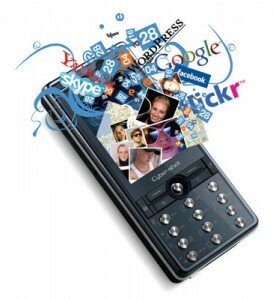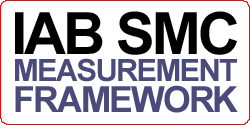by Rob Salmon, Director of Digital Marketing, Torchbox,
Did you watch any of the ski cross in the Winter Olympics? The one where four top class skiers line-up before racing down a rocking and a rolling rollercoaster of a track over bumps and jumps at blistering speeds in a quest to beat the rest and make it to the bottom first. Like a James Bond ski chase where you don’t know whose going to triumph. It was incredibly compelling content.
I made a point of watching as much as I could. I told my family. My friends. My workmates. Maybe they too went and watched and then told their circles.
So what relevance does this have to social media?
Well, if you want people to become a fan of your Facebook page, follow you on Twitter or share your iPhone app, I reckon you had better make sure it has a compelling content offer.
Otherwise, you’ll end up with a Winter Olympic discipline akin to watching paint dry. And I don’t think watching paint dry is ever going to command a large or highly engaged audience (although maybe this YouTube link which has been watched 33k time proves that wrong!?). Read more…
By Iain MacMillan, RMM and the IAB Social Media Council education sub-group
When considering how to make best use of social technologies and media, it can be hard to know where to start. Making an organisation’s interactions amongst its employees, customers, enthusiasts or prospects more social can have numerous benefits -and can be achieved in many and various ways.
With this in mind, we believe a broad framework of social media activity types would be most beneficial – not only for those who lack experience in this area, but also for people for whom a simple check-list might be a useful aide memoire.
We’ve devised a list of six ways in which brands can use social technologies to impact upon a business’ marketing function.
Read more…
By Katie Streten, Imagination
There is a lot of discussion on blogs and in social media generally about Twitters slow and careful inching towards a revenue model. Most of the thought is that it will take the tried and tested advertising approach, and after all, it has worked well for Facebook so there is no reason Twitter wouldn’t benefit in a similar way. Twitter has a simple mechanic that allows trend and conversation tracking and the potential is that this will deliver the possibility of highly targeted advertising from brands in much the same way that Facebook does. The key difference between the two would be that Facebook’s advertising is based on the demographic and life stage data their users provide the network with and Twitter’s would focus not on demographics but on moments of interest, conversations. And in fact Twitter’s ability to model and deliver based on conversation would be far more powerful than Facebook’s model – after all, simply because I am a 45 year old mother of three doesn’t mean I am not going to be highly interested in paintballing in the New Forest, and yet this may only be the interest of a weekend, a day, an hour. Identity is more fluid than demographics allow and the ability to talk to users in real time moments of decision would be incredibly powerful for any advertiser. Read more…
By Harriet Clarke, IAB
Mobile creativity has come on in leaps and bounds in the last 12 months. There are great examples of creativity in the mobile space, whether it’s been through apps or general mobile campaigns. At the IAB we’ve even decided to set up a Creative Showcase award dedicated to mobile (more on that in the next week or so, watch this space!). One of these reasons is because WE NEED MORE CASE STUDIES! We know social media on mobile is big, but there needs to be more proof… Read more…
 The IAB’s social media and mobile councils have collaborated to produce a list of eleven things you need to know about mobile and social media.
The IAB’s social media and mobile councils have collaborated to produce a list of eleven things you need to know about mobile and social media.
1. Accelerating change. Whilst Gartner predicts that mobile will be the dominant form of web access worldwide by 2013, today, already, the combination of social and mobile is accelerating that trend, with nearly the same percentage of iPhone owners accessing Facebook through their mobile (71%) as through fixed line internet (77%).
(Ipsos, “The Future of Mobile” study, December 2009)
Steve Wing, Head of Mobile and Digital Attraction, Guardian
2. Social media and mobile are growing. It’s been predicted by eMarketer that mobile and social network users worldwide will grow more than fivefold between 2009 and 2014, rising from 141.4 million users in 2009 to 760.1 million in 2014.
Clark Turner, Editor, UTalk Marketing Read more…
By Dhiren Shingadia, Mindshare UK
I had a conversation with a fellow industry insider last week about the tools market and the number of tools that are set to reach us soon.
One in particular is Looking Glass by Microsoft: a marvel of information design. Looking Glass seems to have reignited rumours about a rival Google offering and free tools for all.
Whilst all of this is great, I cannot help but backtrack to a few years ago when Google gave everybody free onsite Analytics. Adoption rates were high, but effective utilisation of the tool and its data is still low.
With everyone taking a greater interest in buzz monitoring and social media metrics, are marketers exposing themselves to yet another layer of information that doesn’t get fully utilised?
The need for analysts is now key in every agency and marketing team. Data from buzz monitoring tools, onsite analytics, CRM and business intelligence needs to be analysed holistically so key actions and outputs can be derived. Our tool sets, free or paid for, will continue to grow and as this occurs our expertise in making the most out of them needs to grow simultaneously.
One of my most endearing traits is consistently wanting to annoy the hell out of people, so hopefully the entire time you’re reading this you’ll have the ABBA song floating around your head and with any luck it will stay there of the rest of the day.
Now that’s the pleasantries out of the way… At the IAB we’re always eager to get our heads around the roles of ‘paid for’ and ‘earned’ media, and the relationship (sometimes conflict) between the two. Last year we hosted a debate on whether social media should be paid for, and I’m often asked why as the ‘Internet Advertising Bureau’ we discuss WOM at all. Well the IAB will be keeping its name for now but we’re always at pains to stress that as a trade body for digital marketing, we’re totally format agnostic – if it’s relevant for brands, then it’s relevant for us. In fact, we’ve been banging on about SEO for years and no one’s batted an eyelid, but with social media getting the lion’s share of attention at the moment, it’s a question that’s regularly posed.
With my background in PR, in fact my heart and head lie much more with the earned side of online communications – relationship building, researching, putting the time in to get to know your audience and impressing them with tailored messaging and content relevant to their interests. Getting a namecheck or coverage as a result of all your hard work is the result that PR practitioners yearn for, and I believe that not everyone has the ability to achieve it. But despite my PR snobbery, in this post I’ve decided to talk about the industry’s bread and butter: the advertising dollars that get ploughed into online making it the largest UK marketing medium, and where this dirty cash fits within the social media landscape (do you have THAT song going round your head now as well?)
Read more…
Peter Kwong Senior Planner at Publicis Modem asks what should clients ask for…
As everyone looks forward to 2010 being the year of social media it has become more apparent that brands will be asking increasingly for activity that leverages it. But what should they be asking for, especially from their agencies? It is not common for clients to call up and say “ you know what I would really like to do an iphone app” or “we need a facebook page”. The question of why they want to do it should be one that we ask back.
Some brands can take to social media more easily, Burberry’s facebook page has 829,000 fans at the time of this post and their commitment to building on their loyal fan base has been seen as vital to their increasing growth. For many however creating such a following doesn’t come easily but can be built given the right platform and I would say the right idea.
Another choice quote I had heard that was asked of an agency was a client wanting a “meerkat” style campaign. We all know about the success of the Aleksandr Orlov the meerkat with 669,000 fans but it is idea behind this campaign that makes people want to engage with it not because it is on a social network. It’s the same reason why people share their runs logged on Nike Plus with friends and fellow runners because these are excellent ideas that engage, entertain and are useful to peoples’ lives. As a result they do a great job in building a connection between a brand and their audience.
I hope this will be the year of great ideas that come to life in social media and the one where we can encourage brands to ask the right question.
Amy Kean, senior PR and marketing manager, IAB.
The results of an IAB and Opinion Matters survey amongst brands appeared in Marketing Mag today under the headline ‘Major Brands Sceptical of Social Media’. The article presents a few stats from the study, which investigated the views of 80 senior-level marketers. These included the fact that almost a quarter (22%) of brands have made social media a core part of their communications strategy, whilst our research found that only 7% of respondents haven’t yet embraced social media in any way. Read more…
Tony Effik, chair of the IAB social media council and chief strategy officer at Publicis Modem.
Unfortunately i can’t take credit for the quote in the headline, it’s by Tom Peters.
The social media revolution is thankfully, utterly confusing. That’s what makes it fun, continuously fresh, and intellectually engaging. That is why so many of us are paying attention. It is an ongoing experiment, and we are the guinea pigs. It is too early for any of us to be experts, so we are all learning at the same dizzying speed. Nobody is clear where this is all going to end. Read more…



